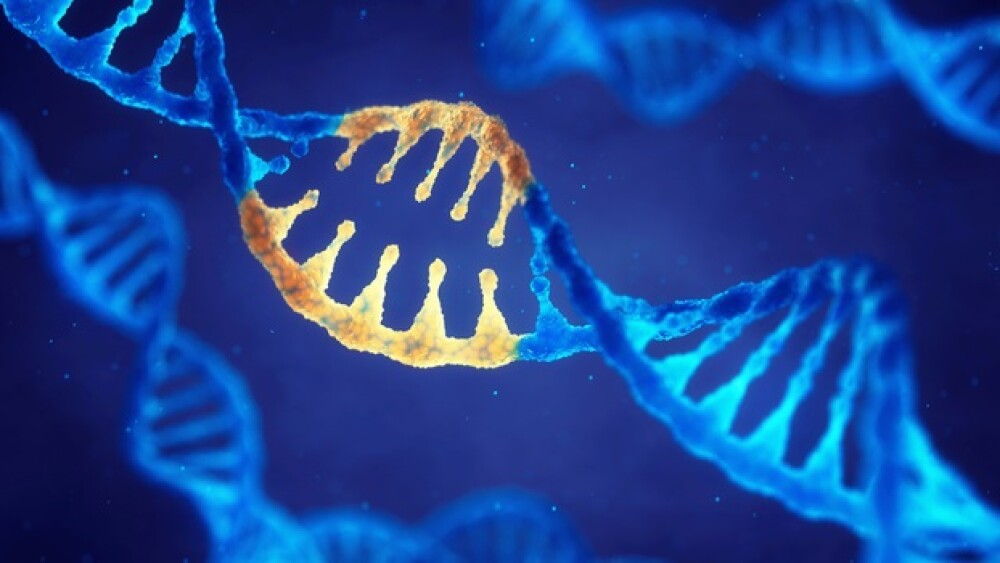Days after Axovant announced an end to focusing on its legacy small molecule portfolio in favor of gene therapies, the company announced it has licensed worldwide rights to two gene therapy programs from the University of Massachusetts School of Medicine.
Days after Axovant announced an end to focusing on its legacy small molecule portfolio in favor of gene therapies, the company announced it has licensed worldwide rights to two gene therapy programs from the University of Massachusetts School of Medicine.
The Basel, Switzerland-based company licensed the gene therapy programs to address two diseases, Tay-Sachs (GM1 gangliosidosis) and Sandhoff diseases (GM2 gangliosidosis). Both of these diseases are rapidly progressive and fatal pediatric lysosomal storage disorders. Tay-Sachs affects about one in 100,000 births worldwide and Sandhoff diseases have an incidence of approximately one out of 180,000 live births worldwide. Tay-Sachs is caused by defects in the GLB1 gene and GM2 gangliosidosis is caused by defects in the HEXA gene, which can lead to Tay-Sachs, and the HEXB, which can lead to Sandhoff. Both disorders result in impaired enzyme function and the accumulation of toxic gangliosides primarily in the central nervous system. There are currently no disease-modifying treatments for these diseases and children born with these disorders mostly have a life expectancy shortened to two to four years of age.
Pavan Cheruvu, Axovant’s chief executive officer, said the company is excited about the potential therapies these two programs could provide for patients. Cheruvu said the nature of these two disorders, which he called devastating, creates an urgent need to develop therapies that may be able to provide hope for the patients and their families. Cheruvu said Axovant will be working closely with the researchers at UMASS, as well as with affected patient communities through the National Tay-Sachs & Allied Diseases Association and the Cure Tay-Sachs Foundation.
Miguel Sena-Esteves, a UMASS principal scientist who works with the two gene therapy programs, said that diseases like Tay-Sachs are attractive targets for the potential solution that gene therapy could offer.
“We have been able to identify the underlying genetic cause of the disease and now have well-understood methods of delivering the corrective genes,” Sena-Esteves said in a statement.
The first gene therapy, dubbed AXO-AAV-GM1, will be evaluated in an investigator-initiated clinical program conducted at the National Institutes of Health. The program delivers a functional copy of the GLB1 gene via an adeno-associated viral (AAV) vector, AAV9, to correct the gene. The first patient is expected to be dosed in the first part of 2019. Axovant noted that the NIH has created one of the largest databases for patients with the two disease. The database includes natural histories and has documented the clinical progression of both diseases in affected patients. Axovant said that database could enable a historical control group for registrational studies. Axovant said it anticipated initial data from the clinical program in the second half of 2019, with continued enrollment of patients throughout the year.
The AXO-AAV-GM2 clinical program is ongoing with the first subject having been dosed with the therapy, the company said. AXO-AAV-GM2 delivers functional copies of the HEXA and HEXB genes via two, co-administered AAVrh8 vectors delivered directly to the central nervous system with the goal of restoring Hex A enzyme activity to address both Tay-Sachs and Sandhoff diseases. Initial data from this program is expected in first quarter 2019 and Axovant said it expects patients to be enrolled in a multi-subject clinical trial in 2019.
In exchange for these exclusive worldwide licenses for the gene therapy programs for GM1 and GM2 gangliosidoses, Axovant will make undisclosed payments to UMass Medical School that are tied to development, regulatory and commercial milestones.





